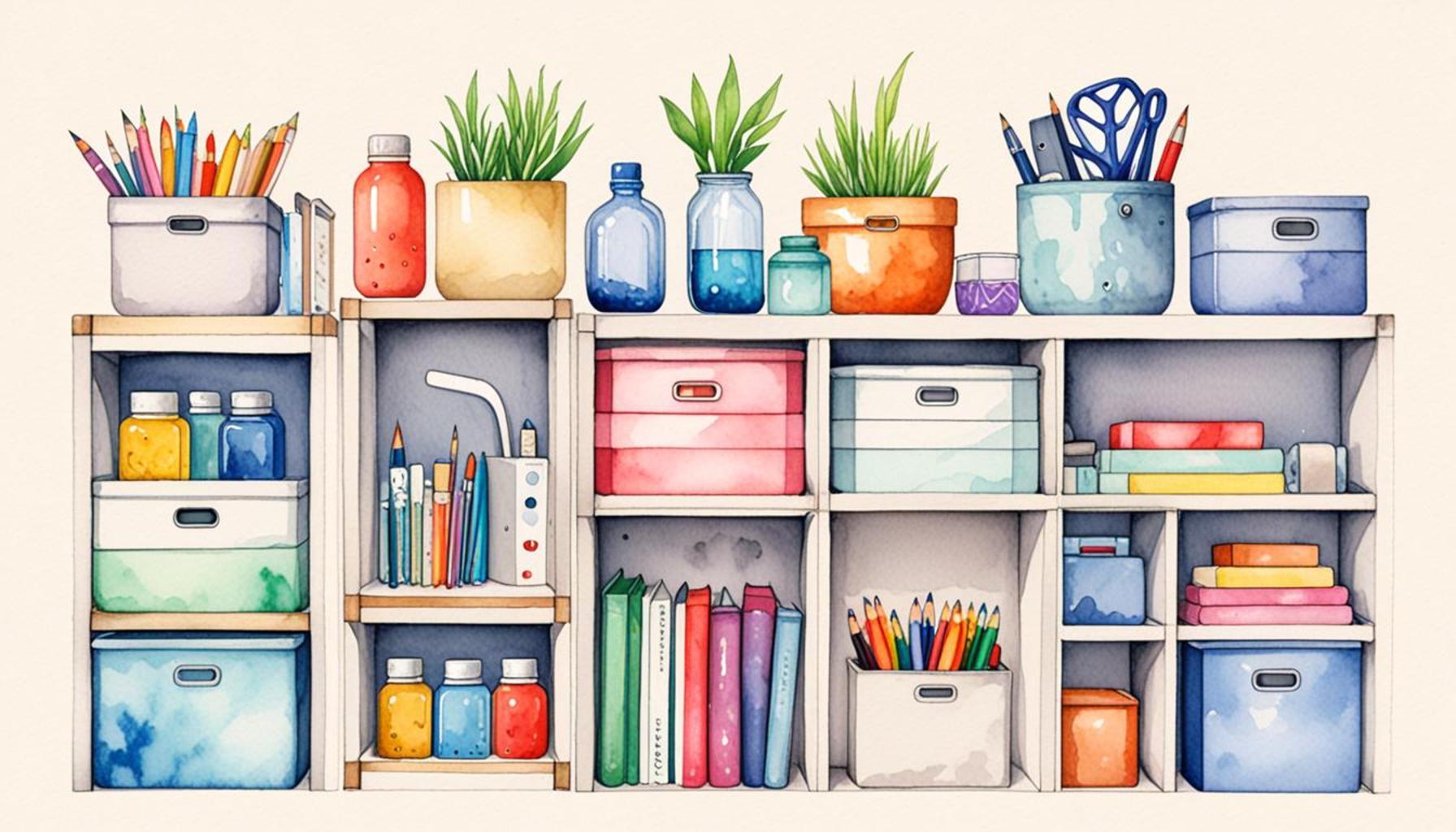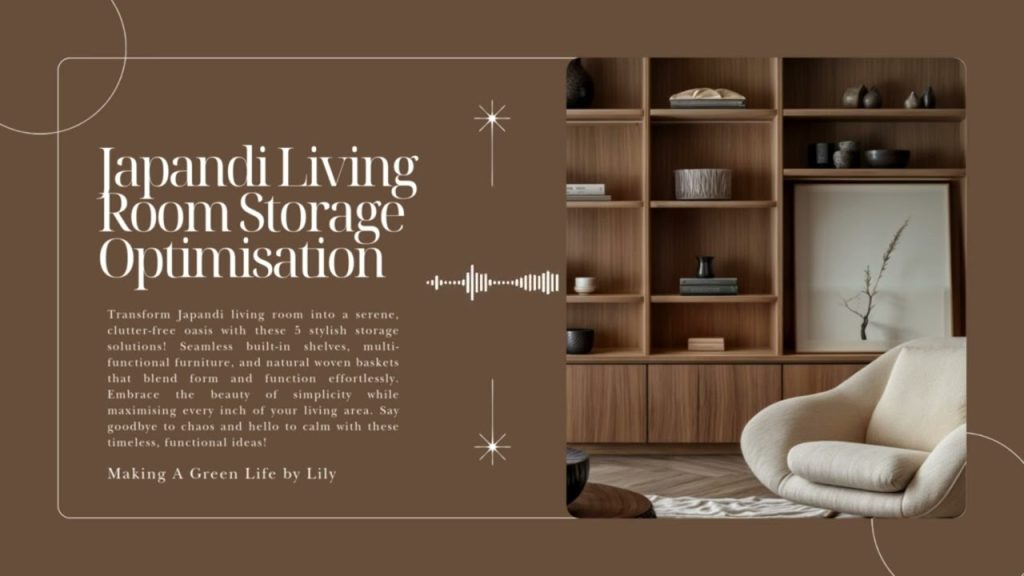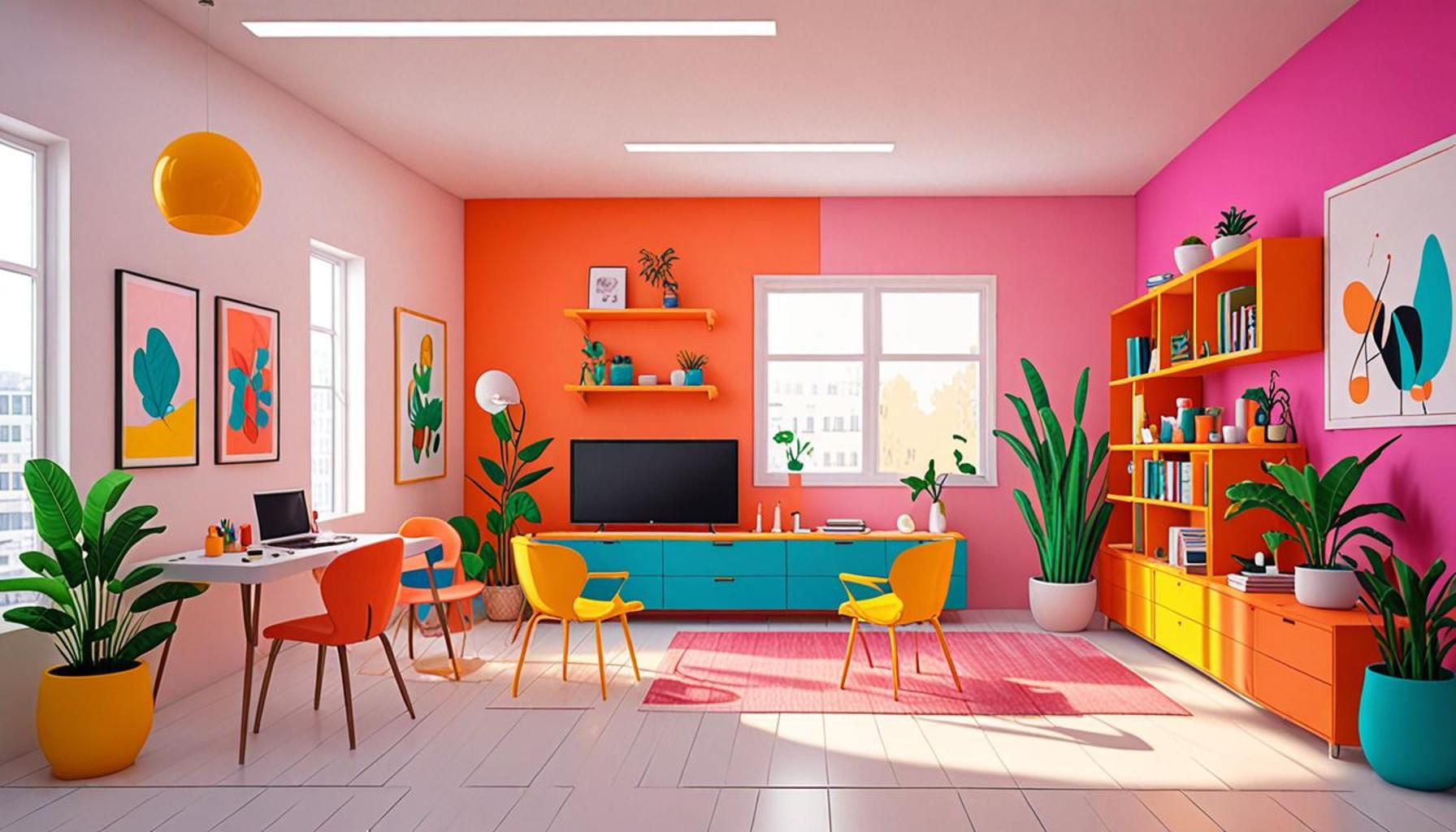Functional Organization: Creating Storage Solutions that Respect the Minimalist Principle

Understanding Functional Organization
In contemporary life, where the pace is quick and demands are incessant, functional organization emerges as a necessary refuge against the backdrop of chaos. The essence of minimalism—stripping away excess and maintaining only the things that serve a purpose—can greatly inform your approach to creating efficient storage systems. Embracing minimalism not only improves the aesthetics of your home but also enhances your emotional well-being by reducing stress associated with clutter.
Key Aspects of Storage Solutions
As you explore different storage options, three fundamental aspects should guide your efforts:
- Decluttering: This is the cornerstone of any organizational system. Begin by assessing your belongings critically—deciding what to keep, donate, or discard can be liberating. For instance, if you have clothes that haven’t been worn in the past year, it might be time to let them go. Consider organizing a neighborhood donation drive to simplify this process and make a positive impact.
- Multi-functional Furniture: In small living spaces, every square inch counts. Investing in furniture pieces that serve multiple purposes can dramatically increase storage efficiency. A classic example is a sofa bed, which can transform from a comfortable seating area to a guest bed within seconds. Additionally, ottomans with hidden storage can serve as both seating and a place to stow away blankets or magazines.
- Creative Storage Ideas: Innovative solutions can often be found right within your current environment. Utilizing vertical space, such as installing shelves above door frames or employing tall cabinets, can help free up floor space. Furthermore, optimizing your closet with pull-out drawers and adjustable shelving can help you both see and access what you own with ease.
Designing a Minimalist Haven
By meticulously applying these strategies, you can cultivate an environment reflective of the minimalist principle. A well-organized home not only looks appealing but also fosters a tranquil mindset. One popular tactic is to create a ‘landing zone’ near your entryway, equipped with hooks for keys and bags, making it easier to maintain order from the get-go.
Moreover, creating a routine for seasonal decluttering can keep your space fresh. Engaging family members or roommates in this practice transforms it from a solitary chore into a collaborative event, encouraging collective responsibility for a serene living space.
In summary, the benefits of implementing a functional organization system extend beyond mere aesthetics; they contribute to improved efficiency and a more fulfilling lifestyle. By embodying minimalism, you empower yourself to appreciate the essence of your living space, ultimately transforming it into a haven of simplicity and efficiency. Embracing these principles invites a deeper exploration into the profound relationship between our personal spaces and our overall well-being. Discover the transformative power of a well-organized home—where each item serves a purpose and contributes to your quality of life.

DIVE DEEPER: Click here to find out more
Transforming Spaces with Intentional Design
To achieve a truly functional organization within your living spaces, it’s essential to focus on intentional design. This means that every storage solution should not only be aesthetically pleasing but also serve a meaningful purpose in your daily life. By adopting a thoughtful perspective toward the arrangement of items, you can streamline your home and ensure that functionality reigns supreme.
The Power of Zoning
One effective strategy is to establish specific zones in your home. These designated areas cater to particular activities, such as cooking, working, or relaxing, which can help to keep clutter at bay and enhance the overall flow of your living space. Consider the following zones for a well-organized home:
- Entryway Zone: This is where functionality meets first impressions. Incorporate a stylish shoe rack, a vibrant mat, and wall-mounted hooks to create an inviting area that also serves to store daily essentials, keeping them easily accessible while minimizing chaos.
- Kitchen Zone: Utilize containers and drawer dividers to manage kitchen utensils and pantry items effectively. Clear jars for dry goods not only preserve freshness but also showcase the contents, reinforcing the minimalist idea of displaying only what you need.
- Work Zone: In an age where remote work is becoming the norm, ensuring your workspace is organized is crucial. A clutter-free desk, complemented by trays for documents and a small filing system for important papers, not only promotes productivity but enhances creativity.
- Leisure Zone: This space should invite relaxation and rejuvenation. Investing in multifunctional furniture—like a coffee table that converts to a game table or a bookshelf that doubles as a room divider—enhances usability without overwhelming your visual environment.
By delineating distinct zones, you can effectively curate your belongings based on their utility and relevance, eliminating the sense of clutter that often plagues multifunctional spaces. Additionally, this approach encourages you to reflect on the essence of minimalism, as each item within these zones should hold significance and not just be filler.
Incorporating Sustainable Practices
As the minimalist movement gains momentum, so too does the call for sustainable organization solutions. Opting for eco-friendly materials like bamboo, reclaimed wood, or recycled metals for storage furniture can resonate deeply with the minimalist principle of valuing quality over quantity. Such choices not only reflect your commitment to sustainability but also elevate the aesthetics of your home.
Furthermore, consider the advantages of upcycling. Transforming old furniture into new storage solutions not only minimizes waste but also adds character to your living space—each piece becomes a part of your story, aligning with the minimalist belief that every item should contribute meaningfully to your environment.
In summary, by prioritizing intentional design, zoning various areas of your home, and incorporating sustainable practices, you pave the way for a functional organization system that truly embodies the minimalist principle. This approach not only fosters an effective storage strategy but also nurtures a more fulfilling and enriching lifestyle.
| Advantages | Key Features |
|---|---|
| Enhanced Efficiency | Minimizes clutter, making it easier to locate items quickly. |
| Improved Aesthetics | Clean lines and simplicity lead to a more inviting space. |
| Sustainability | Eco-friendly materials can be incorporated for a greener approach. |
| Customizability | Adaptable solutions cater to individual needs and spaces. |
The theme of “Functional Organization” aligns beautifully with the minimalist principle, promoting a serene environment free from excess. The focus on enhanced efficiency enables individuals to experience a marked increase in productivity as they navigate clutter-free spaces. Beyond mere functionality, the aesthetic appeal of such organization captivates and transforms living areas into havens of tranquility.Additionally, sustainability is a core attribute of modern storage solutions that respect minimalism. By selecting eco-friendly materials, homeowners not only declutter their spaces but also contribute to the well-being of the planet. Moreover, customizability is paramount; each individual’s storage needs can vary greatly, necessitating adaptable solutions that fit diverse lifestyles seamlessly. Exploring these advantages can lead readers to practical applications that resonate with their own organizing challenges. Whether it’s a small apartment or a vast office, understanding these organizational strategies can unlock newfound potential in any environment.
DISCOVER MORE: Click here to learn about digital minimalism
Smart Storage Solutions for a Streamlined Life
Embracing functional organization in your home goes beyond merely arranging items; it involves implementing smart storage solutions that enhance both space and accessibility. The beauty of minimalism lies in the ability to store necessary items in a way that breathes life into spaces, allowing for both practicality and serenity. Here, we explore innovative strategies that are particularly effective in maintaining a minimalist aesthetic.
Innovative Use of Vertical Space
One of the most valuable assets in any home, especially in urban environments, is vertical space. Utilizing walls to create storage not only frees floor areas but also serves as a decorative element. To harness this potential, consider hanging shelves or floating cabinets that allow for the display of cherished items without overwhelming the senses. For example, in a modern kitchen, wall-mounted racks for pots and pans can serve a double purpose: functionality and artful presentation. This strategy maintains a minimalist principle by ensuring that every item has its place and contributes visually.
Multi-Functional Furniture
The challenge with minimalism often lies in *balancing* style with practicality, and this is where multi-functional furniture shines. Pieces that serve dual purposes can significantly cut down on clutter while adding aesthetic appeal. Consider a stylish ottoman that doubles as storage for blankets, or a bed frame with built-in drawers for linens and off-season garments. Not only do these solutions offer a clever way to facilitate organization, but they also promote a tidy and harmonious living space.
Decluttering Through the “One In, One Out” Rule
Adopting a routine decluttering process is essential in maintaining organization that aligns with minimalist values. The “one in, one out” rule is a practical method that encourages you to assess your belongings critically. For every new item brought into the home, another should be removed. This mindset not only prevents accumulation but also fosters mindfulness regarding your purchases. The goal is to surround yourself only with items that serve a purpose or spark joy, an idea popularized by Marie Kondo, a leading voice in the minimalist movement.
Digital Document Management
In our increasingly digital world, organizing paperwork can feel overwhelming. Implementing a digital document management system is a practical way to reduce physical clutter. By scanning important papers and storing them electronically, such as in secure cloud storage, you can easily access your documents without sacrificing valuable space. This technique aligns perfectly with minimalist principles, as it also mitigates the risk of losing important documents while allowing you to retain only what’s essential.
Dynamic Labeling Systems
Date-sensitive items, such as pantry goods or seasonal decorations, can lead to unnecessary waste if not monitored effectively. Implementing a dynamic labeling system is an effective way to battle this issue. Use customizable labels for bins and containers that can easily be updated or changed as needed. Not only does this organization tactic promote utility, but it can also inform your purchasing decisions, helping to manage your space in line with minimalism.
Through creative strategies such as maximizing vertical space, utilizing multi-functional furniture, enforcing decluttering habits, managing digital documents, and establishing dynamic labeling systems, you can cultivate a sense of tranquility in your home. These smart storage solutions work synergistically to enhance your environment, making it not just organized but also a reflection of a minimalist lifestyle that prioritizes simplicity, functionality, and intentionality.
DISCOVER: Click here to enhance your productivity
Conclusion: Embracing Minimalism Through Functional Organization
In the quest for a more serene and organized living space, functional organization emerges as a powerful ally, seamlessly intertwining the principles of minimalism with effective storage solutions. As we have explored, the journey involves not only clever strategies such as utilizing vertical space and multi-functional furniture but also cultivating mindful habits that ensure longevity and sustainability in organization.
Applying practices like the “one in, one out” rule creates a routine that encourages individuals to be more conscious of their belongings, fostering a lifestyle that respects the minimalist ethos. Additionally, embracing digital management systems for documents and implementing dynamic labeling helps to reduce clutter while allowing for easy access to essential items. This approach ultimately transforms your home into a sanctuary that reflects both your personal style and your commitment to simplicity.
Furthermore, adopting functional organization can enhance your mental clarity, as a streamlined environment reduces distractions and promotes a sense of calm. By focusing on storage solutions that respect the minimalist principle, you not only facilitate a more efficient way of living but also contribute to a broader cultural movement that values quality over quantity. As you embark on this journey, remember that every small change contributes to a larger transformation—creating a home that is not only aesthetically pleasing but also fosters tranquility and enhanced functionality.
In summary, the principles of functional organization and minimalism are not just trends; they represent a thoughtful approach to our living spaces that celebrates simplicity, utility, and intentionality. By continuing to explore and implement these concepts, you can create a harmonious environment tailored to your needs and aspirations.


